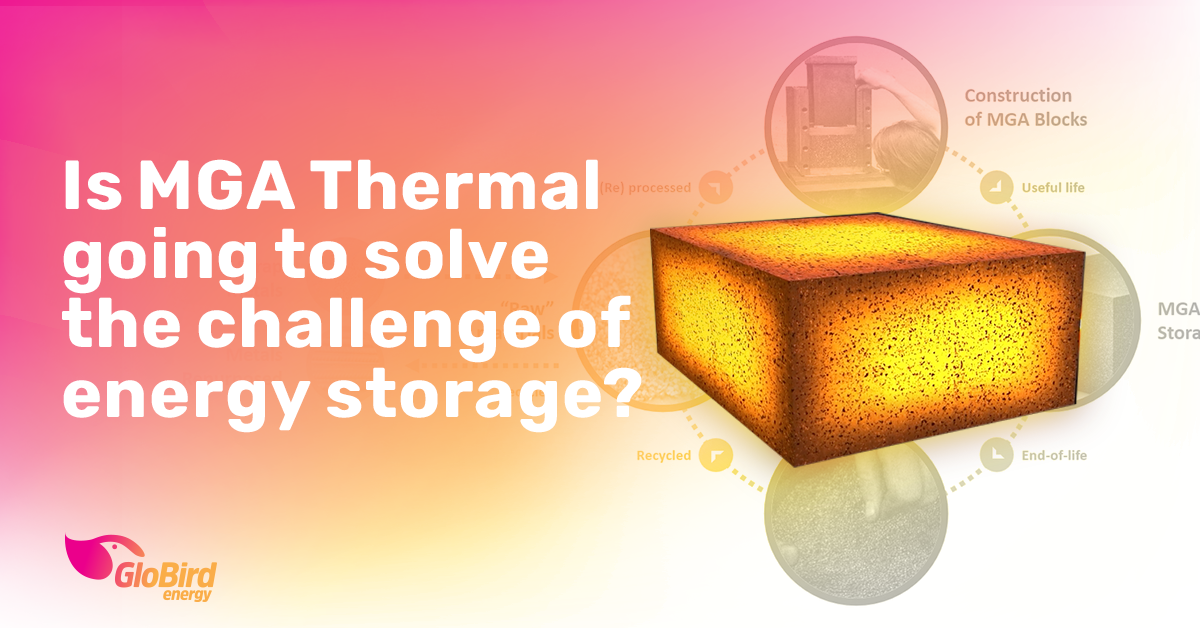The strong uptake of energy supplied from renewable sources is driving a need for improved storage solutions in Australia’s electricity markets.
The combination of sustainable cheap energy that’s ready for dispatch is what everyone is hoping for.
We’re watching with great interest and will do our best to identify and introduce you to any ventures that are aiming to meet that challenge and outline the technologies they’re using to do so.
One such company is MGA Thermal.
About MGA Thermal
MGA Thermal was established in 2019 following the development of breakthrough technology by a team at the University of Newcastle. It’s based at Tomago, near Newcastle, in the Hunter region of NSW.
MGA stands for Miscibility Gap Alloys, a thermal storage material that’s the core technology on which the company is basing its Thermal Energy Storage Solutions (TESS).
About the technology
Miscibility Gap Alloys (MGA), which have been invented specifically for this purpose, are capable of storing a huge amount of energy as heat, in a safe and easy to use way.
MGA Thermal is manufacturing the material in the form of blocks, designed with two key materials: tiny metal alloy particles dispersed through a matrix material.
The tiny particles melt as the blocks are heated and energy is absorbed, while the matrix material remains solid and keeps the molten particles in place.
The energy is stored during the solid-to-liquid phase change and is released as the blocks cool and the particles become solid again.
MGA Blocks are used in Thermal Energy Storage Systems (TESS) which deliver continuous high temperature heat or electricity that is safe, low cost, sustainable, and high capacity.
Does it really work?
The technology has been demonstrated and proven on a small scale, but we’re in the process of finding out if it’s going to be viable at scale.
A $3 million pilot program, which started in May 2022 and is due to be completed in April 2024, has received some key funding: $1.26 million from the Australian Renewable Energy Agency (ARENA) and a grant of about $560,000 from Shell’s GameChanger accelerator program.
The pilot aims to test several scenarios that simulate end-use cases, including providing dispatchable power. The data and insights produced will inform the business case for future applications of the technology.
The project will operate for at least 6 months to demonstrate charging, storage, and discharging capabilities.
What they’re hoping to prove
The project aims to initially validate the performance of MGA Thermal’s proprietary technology, while also making the techno-economic business case for MGA Thermal’s technology much clearer, particularly in comparison to competing energy storage technologies.
If everything goes to plan, the company and its backers hope to demonstrate the role that Thermal Energy Storage (TES) technology could play in the Australian energy market, including for dispatchable cheap electricity.
If the pilot project is successful, MGA Thermal will look to scale up its manufacturing capacity to enable it to deploy its TES technology at utility scale in the Australian energy market as soon as possible.
What would it mean to see the technology succeed?
MGA Thermal states that its primary focus is enabling intermittent renewable energy sources, such as the sun and wind, to provide base load electricity to the grid, and process heat to industry.
The technology is attractive for those looking to decarbonise, with a high potential impact in the medium to long-duration energy storage sector.
Unlocking zero-carbon renewable energy storage for grid and industrial use is pretty much what it’s all about.
What’s more, MGA Thermal is all-in on the circular economy and a sustainable, renewable-energy future: MGA Blocks can be made using recycled materials and can be recycled at the end of their long lifetime.
Secure, stable, green, affordable energy in Australia.
We can’t wait to see it all unfold over the next 14 months.
